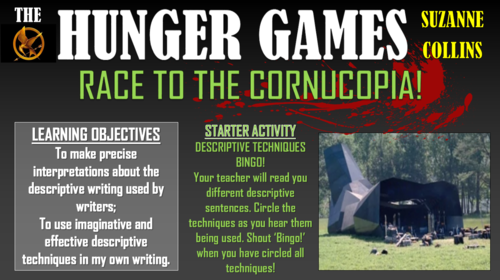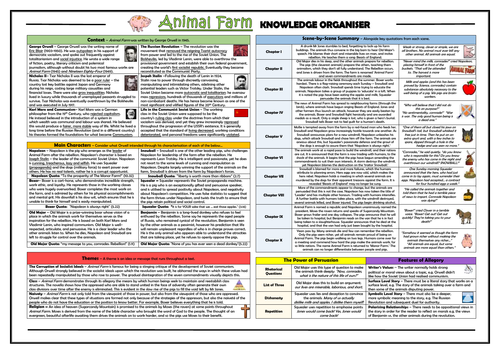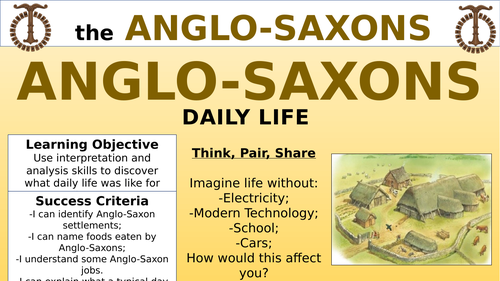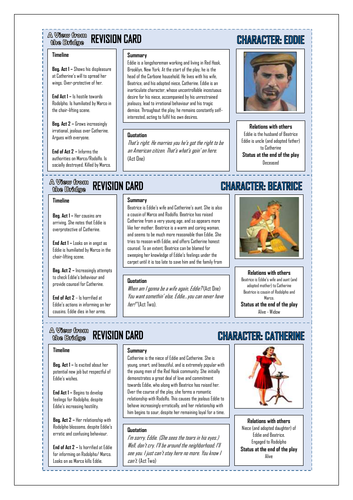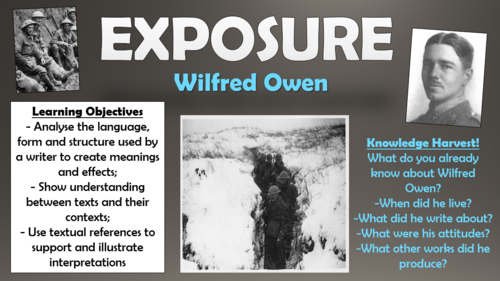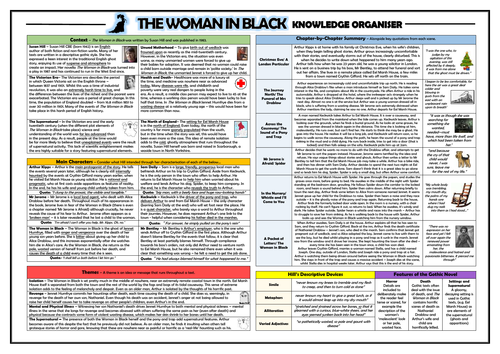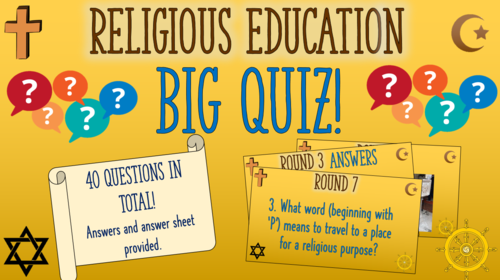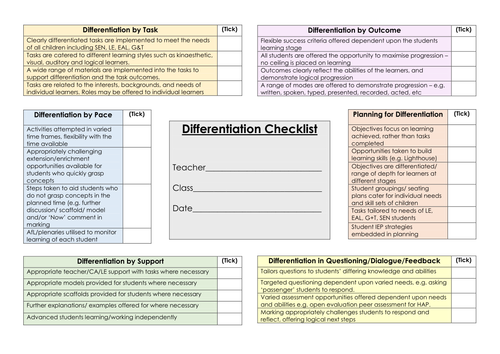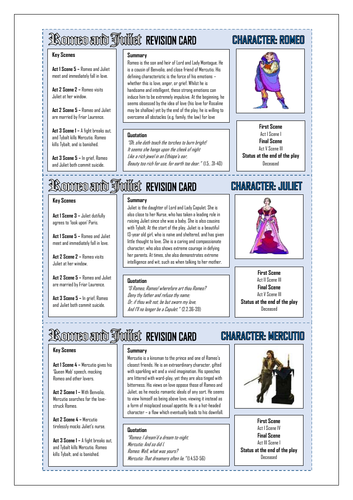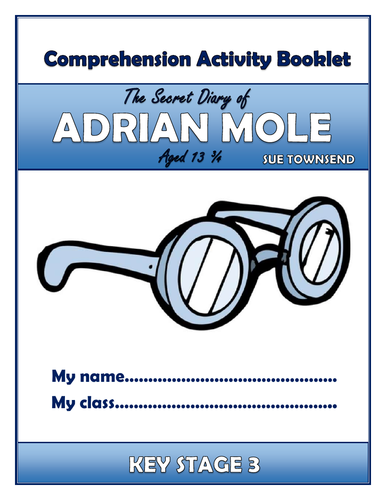
3k+Uploads
1894k+Views
2229k+Downloads
All resources

The Hunger Games - Race to the Cornucopia! (Descriptive Writing Lesson)
This engaging and informative lesson enables students to compose sophisticated, imaginative creative writing, through producing a first person account about competing in the opening stages of The Hunger Games. In order to do so, students first analyse the descriptive writing devices and sentence structures used by Suzanne Collins in Chapter 11 of The Hunger Games - the section in which the Hunger Games commence – before applying what they have learnt to their own compositions.
The lesson follows a step-by-step learning journey, in which children learn through:
Defining each of the different types of descriptive devices, through playing a fun, interactive bingo game;
Reading an extract from Chapter 11 of the text (provided) which describes the moments immediately before and after the Hunger Games commence;
Identifying the language techniques used in the extract to paint an image of place in the minds of the readers, and to create the desired atmosphere;
Analysing the effectiveness of each of Collins’ descriptive devices;
Analysing the sentence structures and lengths employed by Collins in the extract;
Creating their own first-person description of the horrific moments at the Cornucopia, before and after the Hunger Games begin;
Peer assessing each other’s learning attempts.
Included is:
Whole lesson PowerPoint - colourful and comprehensive;
Bingo Cards for the starter activity (and host instructions/ questions);’
Extract from Chapter 11 of The Hunger Games;
Structure strips to support the descriptive writing;
Writing to Describe Helpsheet to support the descriptive writing;
Comprehensive Lesson Plan.
All resources are provided in Word (for easy editing) and PDF (to ensure formatting remains fixed between different computers).
There are also opportunities for group learning, speaking and listening, peer assessment, and whole class discussion. I originally used these resources with year 8 classes, however colleagues have used them for between years 5 and 10 with some adaptations.
All images are licensed for commercial use, and image rights are listed on the last page of the presentation.

The Magic Finger - Roald Dahl - KS1 Comprehension Activities Booklet!
This resource booklet contains a wide range of age-appropriate, engaging, and meaningful comprehension activities for use throughout the reading of Roald Dahl's 'The Magic Finger.' (Teachers have found them particularly useful in comprehension or guided reading sessions). They are perfect for aiding the progress of children towards meeting the KS1 expectations within the new National Curriculum framework. Children love learning from these resources, whilst they are also of great use to teachers, as there is explicit information within each task regarding which comprehension strands the task is designed to demonstrate. They also relate to key extracts, characters, and themes from the story, ensuring that children gain a deep understanding of the text.
Activities within the booklet include:
- 'Feed The Ducks' - to enable students to demonstrate that they can: 'talk about their favourite words and phrases in the story;'
- 'Dahl's Description' - to enable students to demonstrate that they can: 'Explain meanings of words that they know and ask the meaning of new words. Link the meaning of new words to words that they already know;'
- 'The Finger' - to enable students to demonstrate that they can: 'Say what might happen next in a story based on what has happened so far;'
- 'The Greggs' - to enable students to demonstrate that they can: 'Enjoy reading and discussing the order of events in books and how items of information are related.'
Plus many, many more activities (the booklet is around 20 pages in length!) I've also added it as a PDF in case the formatting differs on your computer.
All images are licensed for commercial use, and are cited on a separate document (included).

Animal Farm Knowledge Organiser/ Revision Mat!
This detailed and visually-appealing resource offers a complete reference point for students learning or revising George Orwell's 'Animal Farm.' It contains comprehensive sections on:
- Context;
- Chapter by Chapter Summary (with quotes);
- Main Characters;
- Themes;
- Features of Allegory;
- 'The Power of Persuasion (in the speeches of Old Major and Squealer).
Key words and ideas are underlined for easy reference. The resource is designed to be printed onto A3, and is provided as both a PDF and a Word version (so that you can edit if you want to). All images used are licensed for commercial use and are cited on a separate document (included).

Writing Recounts - Lower KS2 Knowledge Organiser!
This clear, detailed and visually-appealing resource offers a complete reference point for year 3-4 children when writing recounts. The organiser is also perfect for teachers, parents and English subject leaders - aiding their planning and supporting of children’s knowledge development for this writing text type.
The organiser has a particular focus on the content, language and structural features required to write effective mystery stories at lower KS2. It contains distinct sections covering:
-Recounts Overview;
-Content: Settings, Characters, and Plot;
-Language: Descriptive Devices, Dialogue, Conjunctions, Punctuation Checklist and Word Mat;
-Structure - Titles, Planning Techniques and other tips;
-Key Vocabulary
The content is fully aligned with the age-related expectations for Lower KS2 children in writing. The resource is designed to be printed onto A3, and is provided as both a PDF and a Word version (so that you can edit if you want to).

Anglo-Saxons Daily Life - Double Lesson!
In this engaging lesson, children develop an understanding of Anglo-Saxons daily life, in particular: farming, jobs and village life, settlements and buildings and food. The learning is guided by a clear and colourful PowerPoint presentation, which guides students through the following step-by-step journey:
-Knowledge recall - gauging what children already know about the Anglo-Saxon era (answers are provided);
-Understanding that the scale of time between the Anglo-Saxon period and the modern day, helping to contextualise the how comparatively simple and harsh life was in the time of the Anglo-Saxons;
-Interpreting and analysing four sources (provided) in order to gain a deeper understanding of each of the key areas of Anglo-Saxon daily life;
-Completing their own extended research to find out more about one of the key areas of daily life;
-Composing a creative piece in which they put themselves in the shoes of an Anglo-Saxon villager;
-Comparing Anglo-Saxon daily life with other eras;
-Self-reflecting on the extent to which they feel they have met the learning objective.
Included is the comprehensive PowerPoint presentation (20 slides), the four sources for the source analysis activity, and the template upon which to record their findings.
In the past, I have used this lesson with children in upper KS2 (years 5 and 6) - the key learning is aligned with curriculum expectations for history. All images are licensed for commercial use.

A View from the Bridge Revision Cards!
These colourful, comprehensive, and well-structured revision cards have been creatively designed for students securing their understanding of Arthur Miller’s play 'A View from the Bridge.’ Each card is visually-appealing and highly-detailed, covering aspects of each feature including a full summary, cited quotations from the play, definitions/ examples, and a consideration of audience reactions. They are tried and tested, with teachers incorporating them in revision games, using them as essay writing aids, or utilising them as home revision aids. They are provided as both PDFs (to prevent formatting issues between computers) and as Word documents (for easy editing).
The revision cards included in this pack are:
Characters - Eddie, Beatrice, Catherine, Rodolpho, Marco, and Alfieri.
Context - Arthur Miller, Italian Immigration, Omerta;
Devices - Dramatic Irony, Stage Directions, Dramatic Tension;
Scenes - Alfieri’s Prologue, Chair-Lifting Scene, The Tragic Ending;
Themes - Community Law, Irrationality, Masculinity.
For any questions or comments, please contact TandLGuru@yahoo.co.uk - Many thanks!

Kenya - Human and Physical Geography - Lesson!
This interesting and highly-stimulating lesson enables students to describe and understand the key human and physical geography features of Kenya. Whilst gaining a wide range of knowledge about the biomes, cities, climate and animals of Kenya, students also become familiar with a wide range of vocabulary pertinent to the KS2/KS3 geography curriculum.
The lesson follows a clear, logical, bite-size learning journey, which guides students towards relevant and constructive learning objectives. Over the course of this journey, they become able to:
-Remember key facts about the African continent to contextualise their learning;
-Learn key facts about the area, population and main features of Kenya;
-Explore further information about the climate and biomes of Kenya through learning about the different types of world biomes, and how they exist;
-Going on a ‘virtual safari’ to further explore the Kenyan savanna;
-Use a model example in order to carry out their own research about one of the ‘Big 5’ mammals of Kenya;
-Self-assess their progress using the learning objectives.
The lesson requires access to atlases and/or web-searching devices.
This resource pack includes:
-A visually engaging whole-lesson PowerPoint presentation (17 slides);
-A Kenya knowledge organiser, for use in one of the fact-finding tasks (in Word and PDF);
The resources within this lesson can be easily adapted to suit home/remote learning.

Similes and Metaphors in Popular Music!
This interesting and highly stimulating lesson enables students to demonstrate a developed and sustained understanding of the effect of figurative language in popular music texts. In particular, students learn to explore the meanings behind similes and metaphors across songs from a range of genres, considering the effect upon the whole text and the intended audience. As one would expect, Students love learning about similes and metaphors through popular music, and this lesson can really help to open students' eyes to how language can be crafted for effect. This has numerous benefits in later poetry and descriptive writing lessons.
The lesson follows a clear, logical, bite-size learning journey, which guides students towards differentiated learning objectives. Over the course of this journey, they become able to:
- Define and identify similes and metaphors;
- Explain the similarities and differences between songs and poetry;
- Observe and listen to several examples of similes and metaphors in popular music examples;
- Understand and analyse the effect of similes and metaphors upon meanings and the reader;
- Apply their knowledge of why similes and metaphors are used to a range of contexts and musical genres;
- Collaborate and present their key findings about similes and metaphors in songs to their classmates;
- Self-assess their learning attempts.
This resource pack includes:
- A visually engaging whole-lesson PowerPoint presentation;
- Link to an online compilation video of similes and metaphors in popular music;
- 3 x lyrics analysis worksheets of varying difficulties (Katy Perry, Train, and Florence and the Machine - all clean)
- A detailed lesson plan, complete with what the teacher and students should aim to achieve at each stage of the lesson.
All images are licensed for commercial use, and are cited on the final slide of the PowerPoint.

Exposure - Wilfred Owen
This engaging, comprehensive lesson aims to improve students’ understanding of Wilfred Owen’s WWI power and conflict poem ‘Exposure’ with particular focus upon the language, structure, and subject matter used within the poem. By the end of the lesson, students demonstrate their knowledge of the text analytically, through assured, appropriate, and sustained interpretations.
The lesson follows a step-by-step learning journey, in which children learn through:
Considering the meanings of the word ‘exposure’ and inferring what this may suggest about the meaning of the poem;
Securing contextual understanding of the conditions and weather faced by WWI soldiers;
Reading and interpreting the poem, using a provided line-by-line analysis, and interactive group activities;
Developing their understanding through inferring and analysing key language and structural choices;
Analysing how the themes of suffering and misery are conveyed through Owen’s language and structure choices;
Self/ Peer assessing each other’s learning attempts.
Included is:
Whole lesson PowerPoint - colourful and substantial; (including hyperlinks to informative and videos)
Copy of poem (freely available online);
Deeper thinking worksheet;
Analysis template with success criteria for creating well-structured responses;
Comprehensive lesson plan.
All resources are provided as word documents (for easy editing) and PDF documents (to ensure consistency of formatting between computers).
There are also opportunities for group learning, peer assessment, and whole class discussion. This was originally taught to middle-ability year 10 and 11 groups, but can easily be differentiated for groups of different ages and abilities.
All images are licensed for commercial use, and image rights are listed on the last page of the presentation.

Lord of the Flies Knowledge Organiser/ Revision Mat!
This detailed and visually-appealing resource offers a complete reference point for students learning or revising William Golding's 'Lord of the Flies.' It contains comprehensive sections on:
- Context;
- Chapter by Chapter Summary (with quotes);
- Main Characters;
- Themes;
- Golding's Language Devices;
- Features of Form.
Key words and ideas are underlined for easy reference. The resource is designed to be printed onto A3, and is provided as both a PDF and a Word version (so that you can edit if you want to). All images used are licensed for commercial use and are cited on a separate document (included).

The Abominables - Whole Class Reading Session!
This whole class reading session aims to develop children’s comprehension skills through a reading of the opening chapter of Eva Ibbotson’s ‘The Abominables.’
The resource pack includes the extract and all of the activities for the session, which the class are guided through via a comprehensive PowerPoint presentation. The reading is followed by a series of activities aiming to develop children’s retrieval, explanation, inference, prediction and summarising skills. It also contains a vocabulary check immediately after the extract is read to clarify any unfamiliar/ difficult language.
The tasks are comprised of quick-check questions, solo thinking, pair/ group discussions and deeper thinking activities.
The session is best suited for children in KS2. I originally used this with Year 4-5 children, although with minor adaptations it could feasibly be used with slightly younger and older year groups. The session is also suitable for home/ remote learning.

The Woman in Black Knowledge Organiser/ Revision Mat!
This detailed and visually-appealing resource offers a complete reference point for students learning or revising Susan Hill’s ‘The Woman in Black.’ It contains comprehensive sections on:
Context;
Chapter by Chapter Summary (with quotes);
Main Characters;
Themes;
Hill’s Language Devices;
Features of Gothic Novels.
Key words and ideas are underlined for easy reference. The resource is designed to be printed onto A3, and is provided as both a PDF and a Word version (so that you can edit if you want to). All images used are licensed for commercial use and are cited on a separate document (included).

Religious Education Big Quiz! (KS2/KS3)
This wide-ranging and comprehensive RE quiz contains 40 questions. It was originally designed for high attaining year 5/6 classes as an end of term activity, but may also be suitable for lower KS3 groups.
Questions are split into 8 rounds of 5 questions each. To add variety and promote engagement, there are a range of regular, true or false, multiple choice and picture questions. Answers are given at the end of each round. The rounds included are:
1.) Churches
2.) Jesus Christ
3.) Islam
4.) Buddhism
5.) Judaism
6.) Hinduism
7.) Religion around the World
8.) Final Round Lucky Dip
A team answer sheet is included, provided in both Word and PDF.

Learning Walk/ Teacher Development Checklists
These comprehensive checklists have been created to aid school leaders when performing learning walks with a particular focus e.g. questioning, differentiation, etc. Clearly structured and organised, they present a central idea surrounded by a breakdown of a number of its key components.
For the user, this layout provides a simple reference list of each of the desirable skills, categorised appropriately. The checklists also provide an alternative to regular feedback methods, which often focus too heavily on the standard or ‘judgement’, as opposed to being a developmental tool.
Alternatively, these are really handy for teachers looking to develop their practice in the key teaching areas listed below. Included in the pack are checklists for:
-Questioning
-Differentiation
-Utilising Resources (including support staff)
-Engagement
-Building Literacy Skills
-Planning and Expectations
-Building Learning Power
-A blank template for you to design your own based upon your own focus
Note: The checklists offer a range of desirable strategies that teachers should look to implement over time - it would be damaging to expect teachers to utilise each of these strategies in every lesson!
Many Thanks
Bundle Sale

Stone Cold Big Bundle!
THIS BUNDLE CONTAINS ALL OF THE STONE COLD LESSONS, IN ADDITION TO THE COMPREHENSION BOOKLET, THE KNOWLEDGE ORGANISER AND THE POINTLESS GAME!
This engaging, varied, and informative scheme of learning is designed to help students gain understanding, assessment skills, and key interpretations of Robert Swindells’ ‘Stone Cold.’ Made up of a wide-range of interesting and exciting lessons, students should complete this scheme having gathered vital skills in: interpreting the significant meanings of the text, understanding the writer’s ideas within the text, identifying the traits of key characters, settings, and themes, understanding dramatic and language devices, and relating the text to its social and historical context.
Stimulating, visual, and easily adaptable, these lessons provide suggested learning objectives and outcomes for students of a wide-range of abilities - The vast majority of tasks are differentiated to allow for different abilities and needs in your classroom. Each lesson loosely follows this logical learning journey to ensure that students learn in bite-size steps:
- Engaging
- Defining/ Understanding
- Identifying/Remembering
- Analysing/ Creating
- Peer or self evaluating.
All of the lessons are interactive, employ a variety of different teaching and learning methods and styles, and are visually-engaging. Resources, worksheets, and lesson plans are all provided.

Jane Eyre - Bertha Mason: The Gothic Monster!
This engaging and informative lesson enables students to make precise and perceptive interpretations of the character of Bertha Mason in Jane Eyre. Through close analysis of specific extracts from the text, students develop an understanding of how Bertha fits the conventions of a quintessential ‘gothic monster’, and also explore her position as a prime example of the ‘Other’ in Victorian society.
The lesson follows a step-by-step learning journey, in which students learn through:
Defining the key term ‘gothic novel’ and understanding the key conventions of gothic literature;
Reading selected extracts from the text and answering comprehension questions considering Bertha Mason as fulfilling the role of the gothic monster;
Considering ideas of the Victorian ‘Other’ and establishing how Bertha Mason recycles these ideas;
Analysing how ideas of Bertha link to predominant 19th Century ideas about mental health and ethnicity;
Using the knowledge they have gathered over the lesson to design and describe their own gothic monsters;
Peer assessing each other’s learning attempts.
Included is:
Whole lesson PowerPoint - colourful and comprehensive;
Bertha Mason worksheet;
Selected extracts (from chapters 11, 20, and 26);
Character profile template;
Comprehensive lesson plan.
There are also opportunities for group learning, peer assessment, and whole class discussion. These resources were originally taught to GCSE students, but with subtle adaptations they have also been used with both younger and older (up to A Level) students. Worksheets are provided as word docs (so that you can edit) and PDFs (to protect formatting).
All images are licensed for commercial use, and image rights are listed on the last page of the presentation.

Romeo and Juliet Revision Cards!
These colourful, comprehensive, and well-structured revision cards have been creatively designed for students securing their understanding of William Shakespeare’s tragedy ‘Romeo and Juliet.’ Each card is visually-appealing and highly-detailed, covering aspects of each feature including a full summary, cited quotations from the play, definitions/ examples, and a consideration of audience reactions. They are tried and tested, with teachers incorporating them in revision games, using them as essay writing aids, or utilising them as home revision aids. They are provided as both PDFs (to prevent formatting issues between computers) and as Word documents (for easy editing).
The revision cards included in this pack are:
Characters - Romeo, Juliet, Mercutio, Friar Laurence, The Nurse, Tybalt;
Context - William Shakespeare, Patriarchal Society, Religion;
Devices - Dramatic Irony, Soliloquies, Dramatic Tension;
Scenes - Act 1 Scene 5 (The Masquerade Ball Scene), Act 2 Scene 2 (Juliet’s Window Scene), Act 3 Scene 1 (The Death of Mercutio/ Tybalt Fight Scene);
Themes - Love, Hatred, Fate and Free Will.
For any questions or comments, please contact TandLGuru@yahoo.co.uk - Many thanks!
Bundle Sale

DT Mechanisms - KS1 Sliders and Levers Bundle!
This engaging and purposeful series of lessons enables children to create working slider and lever mechanisms.
The resources include 3 lessons and an evaluation sheet (leading children through the ‘research, design, make, evaluate’ process) and a corresponding knowledge organiser.
I used a polar theme when teaching this unit, as it was our topic at the time, but the resources can easily be adapted to fit your own particular project.
Each PowerPoint is eye-catching and comprehensive, and all worksheets templates are included as in both Word and PDF.
These lessons were originally created for children in years 1-2, but may be adapted for slightly older and younger year groups.

Revolting Rhymes Little Red Riding Hood and the Wolf - Whole Class Reading Session!
This whole class reading session aims to develop children’s fluency and comprehension skills through reading ‘Little Red Riding Hood and the Wolf’ from Roald Dahl’s Revolting Rhymes.’
The reading is followed by a series of activities aiming to develop children’s retrieval, explanation, inference, prediction and summarising skills. It also contains a vocabulary check immediately after the extract is read to clarify any unfamiliar/ difficult language.
The tasks are comprised of quick-check questions, solo thinking, pair/ group discussions and deeper thinking activities. The text is hyperlinked (first slide) for ease of access, and also provided as a PDF.
The session is best suited for children in years 2-4, although with minor adaptations it could feasibly be used with slightly younger and older year groups.

The Secret Diary of Adrian Mole Comprehension Activities Booklet!
This resource booklet contains a wide range of age-appropriate, engaging, and meaningful comprehension activities for use throughout the reading of Sue Townsend’s ‘The Secret Diary of Adrian Mole, Aged 13 3/4.’ Teachers have found them particularly useful in comprehension or guided reading sessions. They are perfect for aiding the progress of children towards meeting the KS3 expectations within the new National Curriculum framework. Children have found these resources extremely engaging, and for teachers there is explicit information within each task regarding which comprehension strands the task is designed to demonstrate. They also relate to key extracts, characters, and themes from the story, ensuring that children gain a deep understanding of the text.
Activities within the booklet include:
‘Context: 1980s Britain - to enable students to demonstrate that they can: ‘Know the purpose, audience and context of the writing and drawing on this knowledge to support comprehension.’
‘Townsend’s Language Devices’ - to enable students to demonstrate that they can: ‘Know how language, including figurative language, vocabulary choice, grammar, text structure and organisational features, present meaning.’
‘Bert Baxter Character Profile’ - to enable students to demonstrate that they can: ‘Study setting, plot, and characterisation, and the effects of these.’
‘Vocabulary Inspector’ - to enable students to demonstrate that they can: ‘Learn new vocabulary, relating it explicitly to known vocabulary and understanding it with the help of context and dictionaries.’
Plus many, many more activities (the booklet is 23 pages in length!) I’ve also added it as a PDF in case the formatting differs on your computer.
All images are licensed for commercial use, and are cited on a separate document (included).

